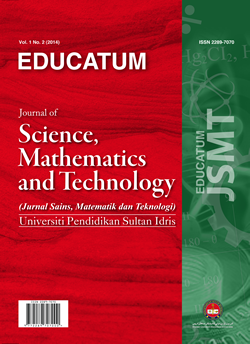A Comparison Analysis Study to Analysis Requirements Elicitation for Arduino Development of IoT Application
DOI:
https://doi.org/10.37134/ejsmt.vol9.1.9.2022Keywords:
Requirement elicitation, Arduino development, IoT application, Software engineeringAbstract
A rapid IoT application and its technology nowadays allowed the needs analyse of requirements elicitation to ensure the application product developed is consistent, correctness and complete. However, improper to elicit requirements is lead the failure of Arduino and IoT development. As requirements engineer, they must know how to elicit the requirements before proceeds to software development. Therefore, this paper provides a gap of study for existing work requirements elicitation that exist in market for commercial and for research purposes. We report our findings from review and analysis of different studies. The strengths and weaknesses of the features and utility are also presented to provide further understanding of the gaps and weaknesses of each research. We conclude that these researches are still immature and need further improvements.
Downloads
References
M. Kamalrudin, J. Hosking, and J. Grundy, “MaramaAIC: Tool Support for Consistency Management and Validation of Requirements,” Autom. Softw. Eng., pp. 1–45, 2016.
T. Nakajima and T. Komiyama, “Applying Quality Requirements Framework to an IoT System and its Evaluation,” Int. J. Adv. Internet Technol., vol. 12, no. 1 and 2, pp. 28–36, 2019, [Online]. Available: https://www.thinkmind.org/index.php?view=article&articleid=inttech_v12_n12_2019_3.
D. Zowghi and V. Gervasi, “The Three Cs of Requirements: Consistency, Completeness, and Correctness,” Proc. 8th Int. Work. Requir. Eng. Found. Softw. Qual., pp. 155–164, 2002.
M. H. L. Wong Cheng, “Informal, semi-formal, and formal approaches to the specification of software requirements,” no. August, p. (Doctoral dissertation, University of British Colu, 1994.
K. K. Patel, S. M. Patel, and P. G. Scholar, “Internet of Things-IOT: Definition, Characteristics, Architecture, Enabling Technologies, Application & Future Challenges,” Int. J. Eng. Sci. Comput., vol. 6, no. 5, pp. 1–10, 2016, doi: 10.4010/2016.1482.
O. V. SINTEF and P. FriessEU, Internet of Things: Converging Technologies for Smart Environments and Integrated Ecosystems. river publishers’ series in communications, 2013.
O. V. SINTEF and P. FriessEU, Internet of Things–From Research and Innovation to Market Deployment. Belgium: river publishers’ series in communications, 2014.
“nternetOfThin g.” https://www.ida.gov.sg/~/media/Files/Infocomm Lan dscape/Technology/TechnologyRoadmap/InternetOfThin gs.pdf.
M. Cicciari, “What’s Missing from the Industrial Internet of Things Conversation? Software.,” 2014.
C. Amariei, Arduino Development Cookbook. Packt Publishing Ltd, 2015.
L. L. Constantine and L. A. Lockwood, Software for Use : A Practical Guide to the Models and Methods of Usage-Centered Design. New York: ACM Press, Inc/Pearson Education, Inc., 1999.
A. Asdayana and M. Kamalrudin, “Eliciting Security Requirements of IoT Applications using Essential Use Case,” Int. J. Inf. Syst. Comput. Sci., vol. 8, no. 6, 2019.
A. P. De Albuquerque and J. Kelner, “IoT4Fun Rapid Prototyping Toolkit for Smart Toys,” vol. 3, pp. 1489–1498, 2020.
E. D. Canedo, A. J. Cerqueira, A. V. Papad´opolis, and A. P. F.de Araujo, “Application of Design Thinking for Requirements Elicitation in Mobile Applications Edna,” in 53rd Hawaii International Conference on System Sciences, 2020, pp. 6651–6660.
S. G. Sakamoto and L. C. De Miranda, “M4REMAIP : Method for Requirements Elicitation Based on Mobile Applications under an Interaction Perspective,” pp. 74–85, 2014.
F. Pramudianto and M. Jarke, “Model Driven Development for Internet of Things Application Prototyping,” no. December, 2016.
N. L. Laplante, P. A. Laplante, and J. M. Voas, “Stakeholder Identification and Use Case Representation for Internet of Things Applications in Healthcare,” IEEE Syst J. 2018, 2018, doi: 10.1109/JSYST.2016.2558449.Stakeholder.
F. Kammuller, J. C. Augusto, and S. Jones, “Security and Privacy Requirements Engineering for Human Centric IoT Systems using eFRIEND and Isabelle,” IEEE Xplore, 2017.
N. Yusop, M. Kamalrudin, M. Mohd Yusof, and S. Sidek, “Meeting Real Challenges in Eliciting Security Attributes for Mobile Application Development,” vol. 0170, no. 5, pp. 25–32, 2016.
Downloads
Published
Issue
Section
License
Copyright (c) 2022 Noorrezam Yusop

This work is licensed under a Creative Commons Attribution-NonCommercial-ShareAlike 4.0 International License.





